
As of this writing, an authoritarian presidential administration has regained and consolidated power over the United States federal government and is systematically attempting to destroy the institutions that protect our democratic freedoms and our shared humanity.
State governments have always been among the most powerful institutions enabling tangible improvements in people's lives. Now, bold state government leadership representing the interests of the people—rather than would-be dictators and billionaire oligarchs—is of existential importance.
For the last decade, the State Innovation Exchange ("SiX") and SiX Action have inspired, equipped, and emboldened state legislators to champion people-centered governance. Now, as we look to our second decade, we resolve to strengthen and scale our support to state-level legislators, advocates, and grassroots organizations as they rise to meet this moment.
Amidst the chaos, disruption, and deep harm playing out across our country, the strategic story for SiX is clear.

The antidote to authoritarianism is a government that truly works for its people. Rebuilding trust in government and restoring faith in civic engagement is essential to protecting democracy. Trust is built when people see that their participation leads to real, tangible change.

In this moment, states are best-positioned to deliver change for their people. States oversee the allocation of more than $3 trillion in public funds annually and have shown they can move more boldly—in both advancing progress and resisting harmful policies—than Congress. By transforming governance at the state level, we can reshape power and build a democracy that truly serves its people.

In making government work, the how of governance is more important than the what. Traditional political practices—our everyday actions, habits, and ways of working—sustain governance systems designed to prioritize the interests of a wealthy, white, male minority at the expense of the majority: Black, Indigenous, and Latinx people; immigrants; LGBTQ+ people; women; and those experiencing poverty. This includes many of us who are actively fighting for justice against these very systems. Creating a government that truly serves its people requires a fundamental shift in how we practice.

Increasingly, bold state-level leaders are practicing collaborative governance, a transformative alternative to traditional governance. We are witnessing the rise of a governance practice that empowers the people who are most impacted by policies to wield their full agency in shaping them. When people practice collaborative governance, not only are their policy efforts more successful because they harness the full power of communities and movements, but they also structurally dismantle oppression, shifting systemic power dynamics by strengthening the fabric connecting people with their government and with one another.

Despite the challenge, we can build the world we want to see. Transforming a governance system as vast and complex as ours may feel daunting, but small shifts in individual interactions can create ripple effects that lead to profound systemic change. The direction of our democracy is not fixed and change can be shaped by those who choose to act. If enough of us embrace collaborative governance, we will bring forth a new and better world.
In this moment, states are best-positioned to deliver change for their people.
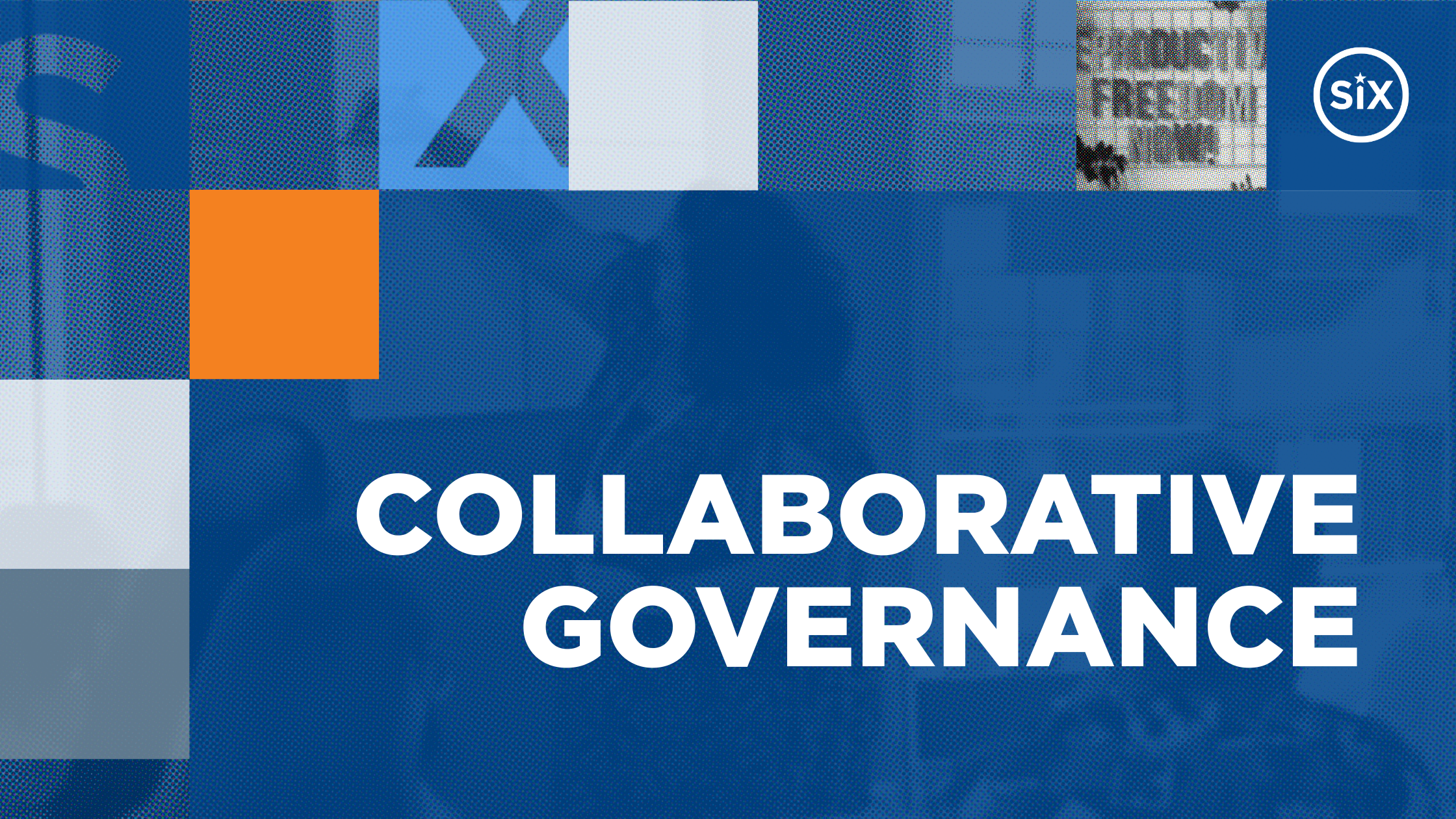
Across the country, bold state legislators, local elected officials, advocates, and grassroots organizations are practicing an alternative to traditional governance. This practice is coming to be called collaborative governance.
Definition: Collaborative governance is the practice of shaping laws, regulations, and government institutions—via the active participation and leadership of the people they impact most—to create the conditions for all people to thrive.
Collaborative governance is purposeful transformation. It is guided by an affirmative vision of a future in which racial, gender, social, and economic justice are real. It centers identities and communities who have historically faced systemic barriers to wielding their full agency in governance processes—acknowledging that, when government works for these people, then it must finally be working for everyone. It grows durable power for these communities by reconfiguring who is involved in governance and how they work together.
Collaborative governance embodies these principles throughout the full governance cycle—not just the legislative process—including:
Values alignment – What values define the world we are building? How do we commit to being together as we learn, grow, build, struggle, lose, and win together in this work?
Long-range visioning – What will it look, feel, sound, smell, and taste like when we have achieved our goal?
Policy design – What will it take for people to feel meaningful change in their lived experience? Will the most marginalized communities feel that change?
Legislative campaign – Are we harnessing the full power of people with a collective interest in our goals—especially directly impacted people? Are we moving according to our values?
Implementation and enforcement – Are departments, agencies, and funding mechanisms making the policy real for people in tangible ways, according to the spirit of the law?
Monitoring, defense and improvement – Are people feeling meaningful change in their lived experience? Have we strengthened a capable, sustainable, community-rooted coalition around this cause?

State Innovation Exchange or SiX (a 501(c)(3) nonpartisan nonprofit), and SiX Action (a 501(c)(4) advocacy organization), are pursuing a joint strategy to help create the conditions for racial, gender, social, and economic justice through the practice of collaborative governance at the state level.
We are releasing this strategy as SiX turns 10 years old. Our strategy describes our role in the collective endeavor for justice by articulating our organizational purpose, analyzing our strategic context, identifying our sources of strength, and laying out our strategic roadmap.
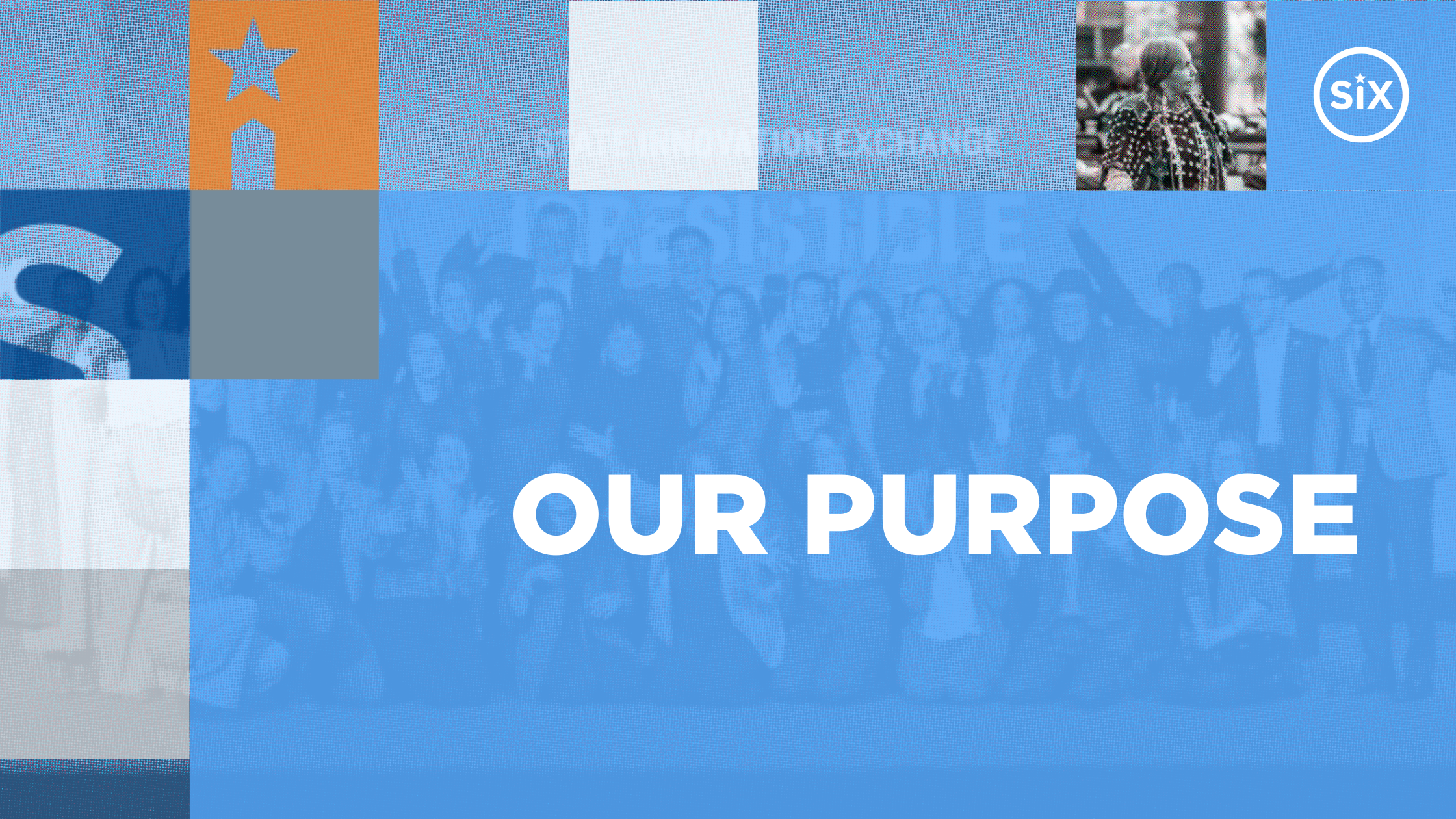
Vision
Our vision describes the compelling future we are building toward.
Our vision: We envision a future in which deeply collaborative efforts among elected officials, their constituents, and civil society leaders help create the conditions for racial, gender, social, and economic justice for all.
Collaborative governance transforms the conditions of power for people who have historically faced systemic barriers
Missions
The missions of SiX and SiX Action explain each organization's unique contribution to the collective effort to build that future.
SiX's Mission: State Innovation Exchange (SiX) makes collaborative governance the dominant practice among state legislators as they govern in partnership with their constituents and civil society leaders. Collaborative governance transforms the conditions of power for people who have historically faced systemic barriers to wielding their full agency in governance processes. As a result, our governance systems will advance racial, gender, social, and economic justice for all.
SiX Action's Mission: SiX Action inspires, emboldens and equips state legislators to secure and sustain racial, gender, social and economic justice in partnership with their constituents and civil society leaders. We enable bold policy agendas by promoting the practice of collaborative governance, which transforms the conditions of power for people who have historically faced systemic barriers to wielding their full agency in governance processes.
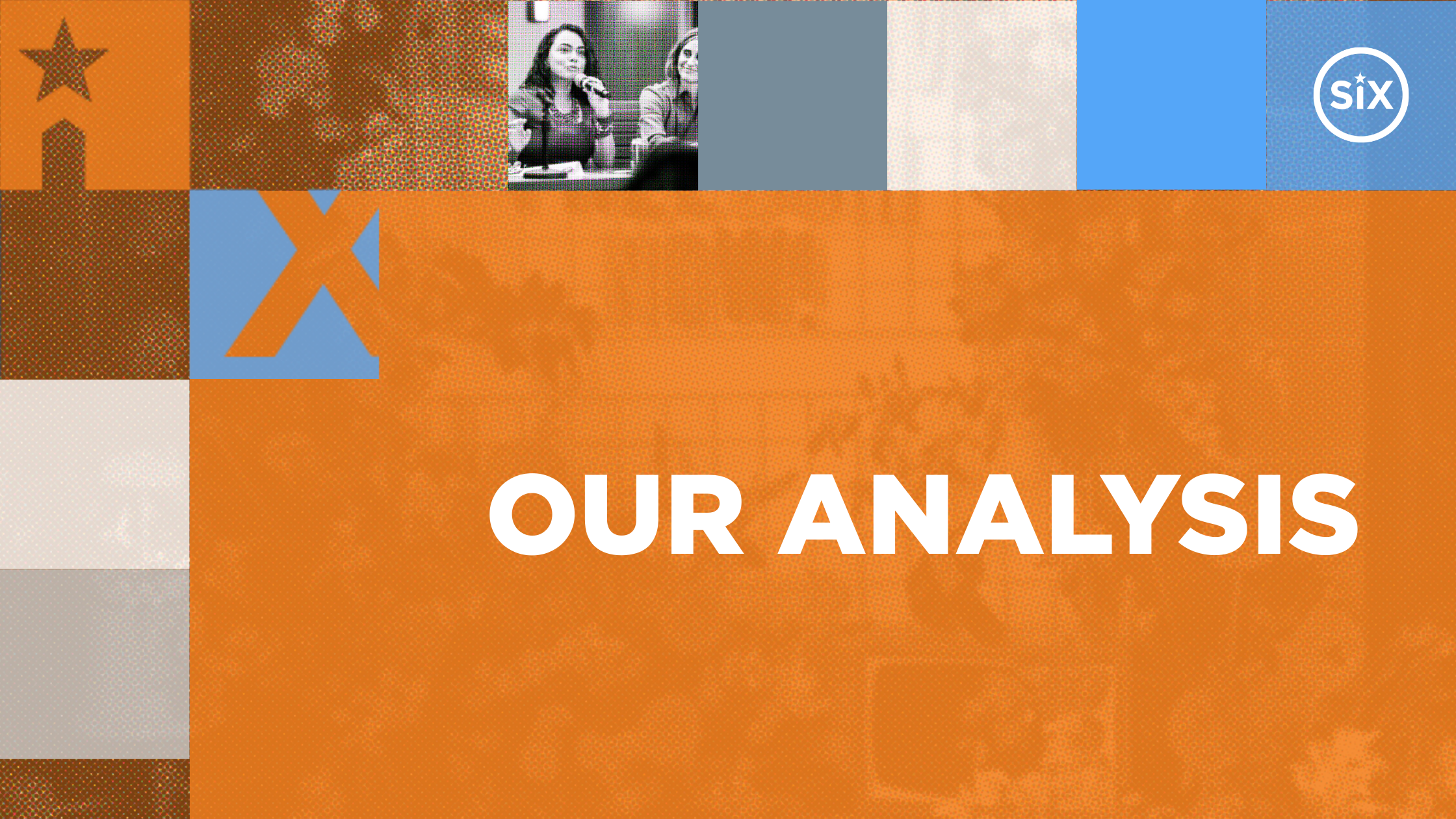
Diagnosis
Our diagnosis frames the strategic challenge we must overcome to fulfill our unique contributions.
People and Practice: Our governance system is sustained by the practices of the people within it. Traditional practices in our governance system arise from the deep-seated values and mental models of white supremacy, patriarchy, and capitalism. The result is that our governance system does not work for Black, Indigenous, and Latinx people; immigrants; LGBTQ+ people; women; and those experiencing poverty. To change the system, we must change who is at the heart of governance processes—and that requires a change in how we practice.
Power and Policy: Power dynamics at every level prevent communities of color, low-income populations, and other marginalized groups from transforming governance systems to serve their needs instead of the interests of corporations and the wealthy, white elite. The policy that results—even policy passed by those seeking racial, gender, social, and economic justice—often lacks the hoped-for impact on the lives of real people.
If we pursue policy without changing the conditions of power in governance, we will not build the future we deserve. We can change the conditions of power by changing how we practice.
Permanence: To transform the system, collaborative governance must become the norm. Yet, among the 7,386 state legislators nationwide in 2024, champions of this approach remain relatively few. As a practice, collaborative governance is still in its infancy within state-level governance systems, and its lack of formalization presents a significant barrier to broader adoption. Additionally, for those who do embrace it, the journey can be isolating and exhausting, often leading to burnout. To make collaborative governance the norm, we must build, support, and sustain a critical mass of champions—ensuring they have the resources, community, and infrastructure needed to thrive.
Theory of Change
Our theory of change presents a perspective on how we can overcome our strategic challenge.
People and Practice: If state legislators practice collaborative governance as they govern in partnership with their constituents and civil society leaders…
Power and Policy: …Then structural power dynamics will shift, giving more agency to people who have historically faced systemic barriers in governance processes… And policy and procedural wins in the short, medium, and long term will help them secure racial, gender, social, and economic justice outcomes that they feel in their lived experience…
Permanence: …And if collaborative governance is adopted broadly…
Desired Change: …Our governance system will be transformed to produce meaningful racial, gender, social, and economic justice outcomes for all people who have historically faced systemic barriers to wielding their full agency in governance processes.
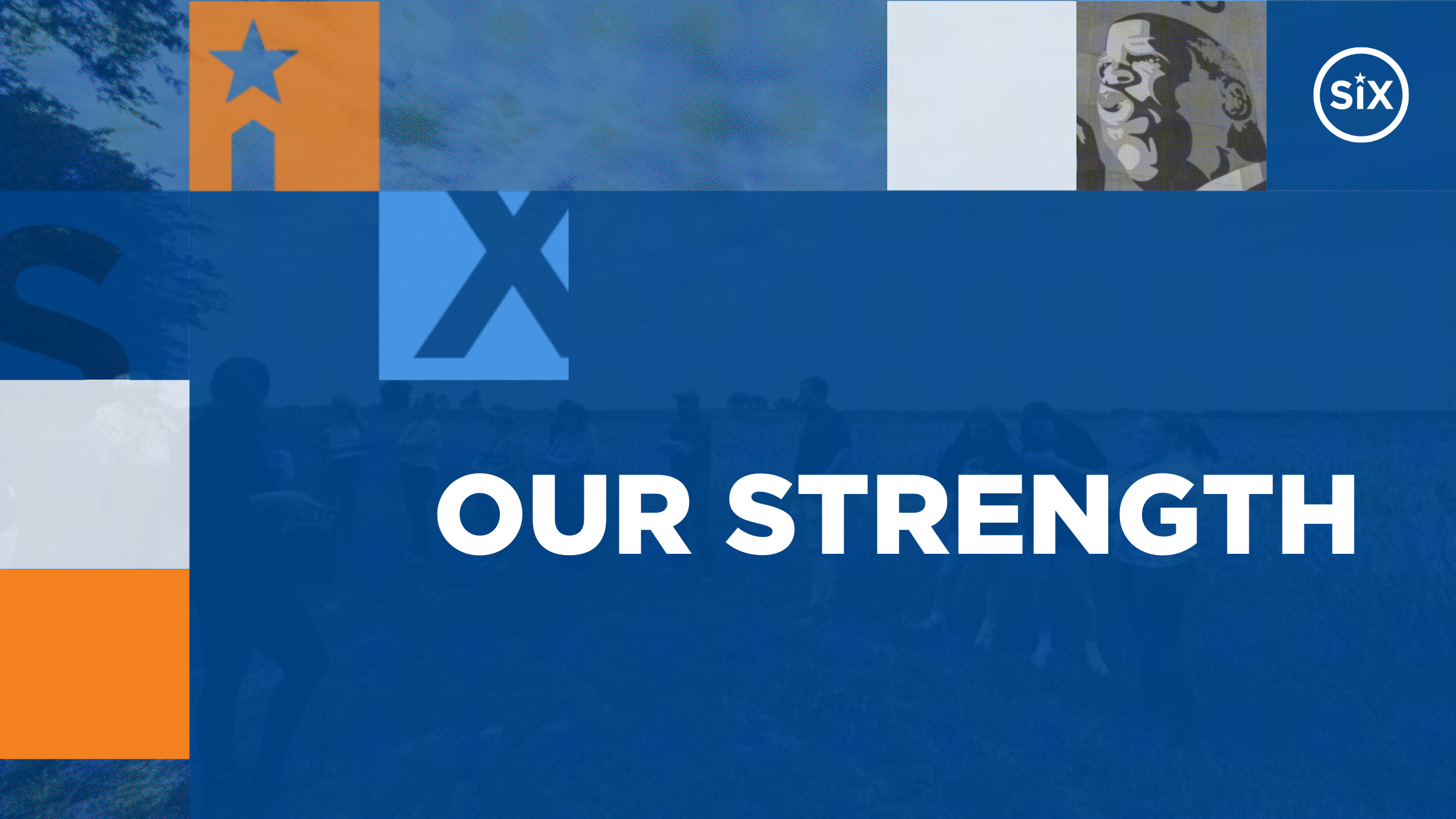
Values
We are world-building at SiX. We are proving that a more caring, more interdependent, more joyful, more liberatory way of working together is possible. We model and practice the values in which this new world is rooted not only externally with legislators, partners, and advocates, but also internally, with one another.
We are building an institution—and a new world—based on five core values:

Adaptability and Imagination. Reflects our openness to change and our belief in the power of learning and dreaming.

Connection, Relationship, and Collaboration. Reflects our organizational belief that relationships, particularly how we build and partner with others, are the foundation for our work.

Wholeness, Consideration, and Care. Reflects our belief in the importance of remembering we are whole people and treating each other and our communities as such.

Belonging and Difference. Reflects our commitment to embracing and welcoming difference and acknowledging the systems that use those differences against us.

Sustainability and Perseverance. Reflects our understanding of both the power of rest and the commitment necessary to see the change we envision for the world.
Value Proposition
Our stakeholders—state legislators, issue advocates, and grassroots organizations—must opt in to the kind of trusting, long-term relationship needed for transformation to arise. We must earn their engagement. We believe our stakeholders will allow us to walk with and guide them only to the extent we help them get their job done.
Here is how our value proposition works.
SiX's core stakeholders choose to engage with us because we:
Help state legislators, issue advocates, and grassroots organizations make progress toward their policy goals regardless of political context, and because our programming helps them feel respected, powerful, and in solidarity with others.
We can uniquely offer this value as a result of our ability to:
In doing so, through the "how" of our work, we:
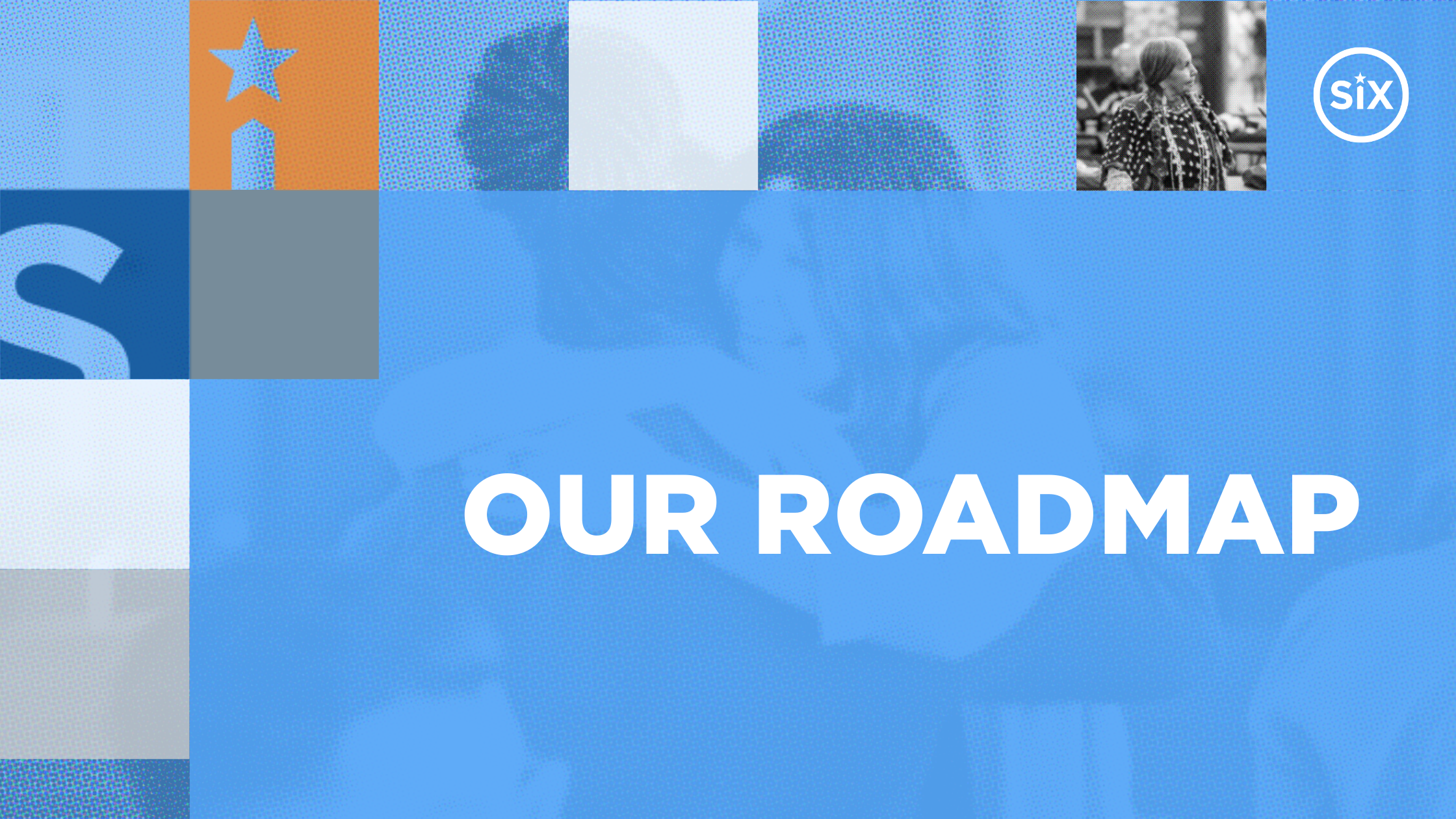
This strategy will guide our growth and evolution as SiX enters its second decade. Our strategic roadmap sketches the shape of that journey over the next three years. Further design and alignment remains for three major, interrelated components of our work and our organization:

Program model. A program model articulates the programming and/or services through which an organization delivers its value proposition.

Operating model. An operating model outlines the organizational form that best supports the program model. Organizational form is not just about structure—the "hardware" of an organization. It also includes organizational "software"—its culture and key processes.

Financial model. A strategic financial model aligns appropriate funding types and sources to an organization's program and operating model. Explicitly considering the financial model in conjunction with program and operating model design will ensure our programmatic and structural vision is financially feasible and scalable.
The next three years will lay the foundation for SiX's second decade. During this time, we will define our vision for the program, operating, and financial models we seek to evolve, and initiate the organizational changes necessary to bring them into practice.
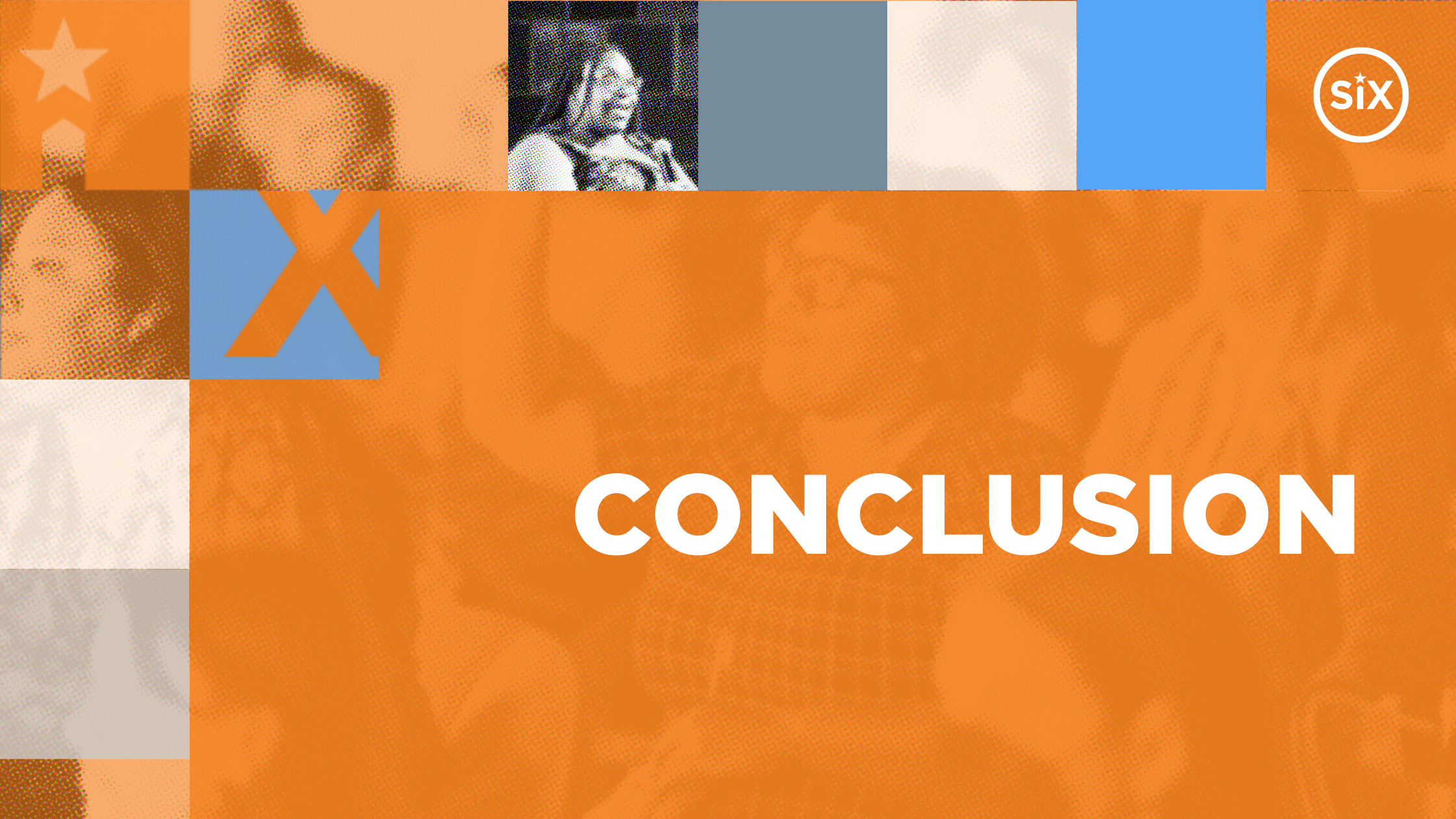
The current blossoming of authoritarianism within the federal government presents challenging terrain to navigate. Yet, SiX's strategy is not a set of reactive tactics for the present moment. Rather, it is an expression of who we are. By clarifying our purpose, strategic analysis, and sources of strength, this strategy will serve as our compass.
As SiX enters its second decade, our strategy grounds us in who we are and who we are becoming as we fulfill what we are called upon to do in our moment, with our link in the chain of justice.